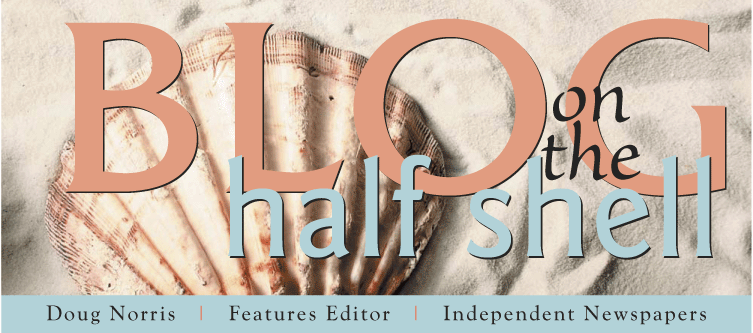Although the weather outside is hardly frightful, I'm making the call now: If you live in New England, get ready for a cold and snowy winter. My reasoning is based solely on recent observations while walking or jogging through neighborhoods suddenly exploding in fat squirrels with bushy tails. I'm talking Santa girth. These aren't woodsy rodents. They're sumo wrestlers. I've got three in my backyard that don't even bother moving anymore when I walk by. They live in a cedar tree on the property and have to take turns scrambling up the bark (although the word "scrambling" is generous; imagine three sumo wrestlers rock climbing behind one another and you have pretty good idea of the pace). So this can't be a good sign for anyone hoping for a mild winter.
But if you don’t trust my forecasting skills, weather lore is abundant in foolproof methods to gauge the severity of winter. Here are a few:
1) Find a dead, local goose. (In other words, no Canada geese. And nothing store-bought. You don't know where they've been.) Locate the breastbone. Its length will indicate the length of the upcoming winter while its color will determine the season’s severity. A plain white breastbone foretells a mild winter. The more mottled, the more severe.
2) Check for moss growing on a tree in your neighborhood. Locate the south side of the tree. The more moss growing on that side of the tree, the harder the winter ahead.
3) Watch those fat squirrels with bushy tails bury their nuts. The deeper they dig, the colder the winter to come.
4) Think back to July. Were the anthills high? If so, it means a snowy winter.
5) Peel an onion grown locally. The general rule of thumb is: “Onion skins very thin/Mild winter coming in; Onion skins thick and tough/Coming winter cold and rough.”
6) Go to the riverbank. Locate a muskrat hole. The higher the burrow, the higher the snow will be this winter.
7) Cut open a persimmon seed. Look inside. If it has a knife shape that means winter will be cold and icy, with winds that cut like a knife.
8) Check the thickness of cornhusks, raccoon tails and the hair on the nape of a crow’s neck. If thicker than usual, expect a rough winter.
9) Watch pigs. Are they gathering sticks? Watch ants. Are they marching in a line? Watch woodpeckers. Are they sharing trees? Watch spiders. Are they spinning bigger-than-average webs or showing up in your house in greater numbers? All of these animal behaviors predict a severe winter.
10) Find a woolly bear caterpillar. Is it fatter and fuzzier than the last time you looked at a woolly bear caterpillar? Is the orange band in the middle narrower than normal? Both are portents of a hard winter.
There’s more. Did the monarch butterflies, snowy owls, geese and ducks migrate early? Are the hornet’s nests higher than normal? Have the bees hibernated in their hives prematurely? Are squirrels gathering nuts even earlier and more frantically than usual, and hiding them in odd places? Are you suddenly noticing crickets and mice in your house?
If so, bundle up and make sure your shovel and scraper are handy. Based on the Fat Squirrel Theory, Old Man Winter looks like he’s building an igloo in Rhode Island this year.
This week’s question: What winter weather lore do you trust the most?
Monday, November 28, 2011
Subscribe to:
Comments (Atom)

